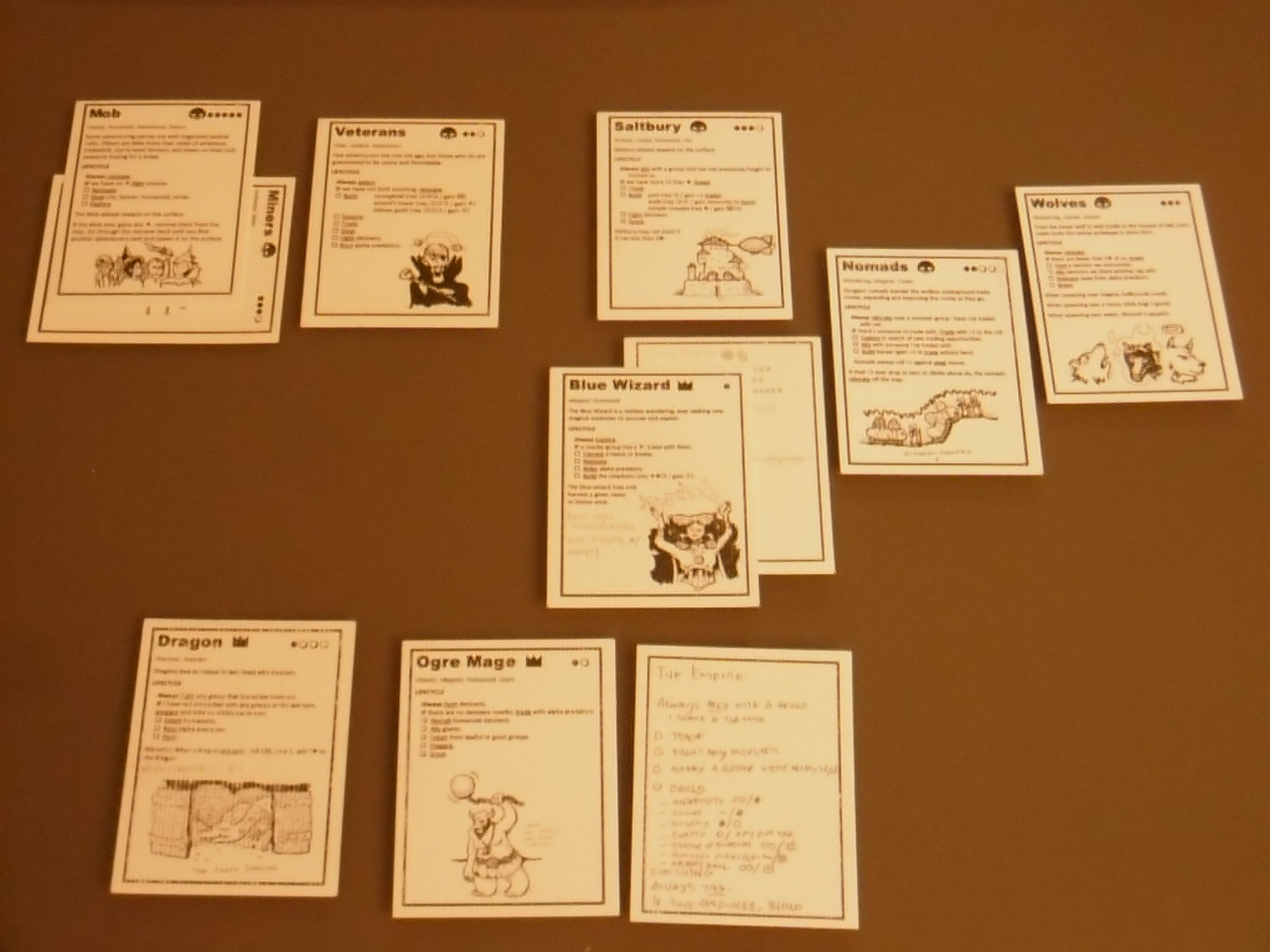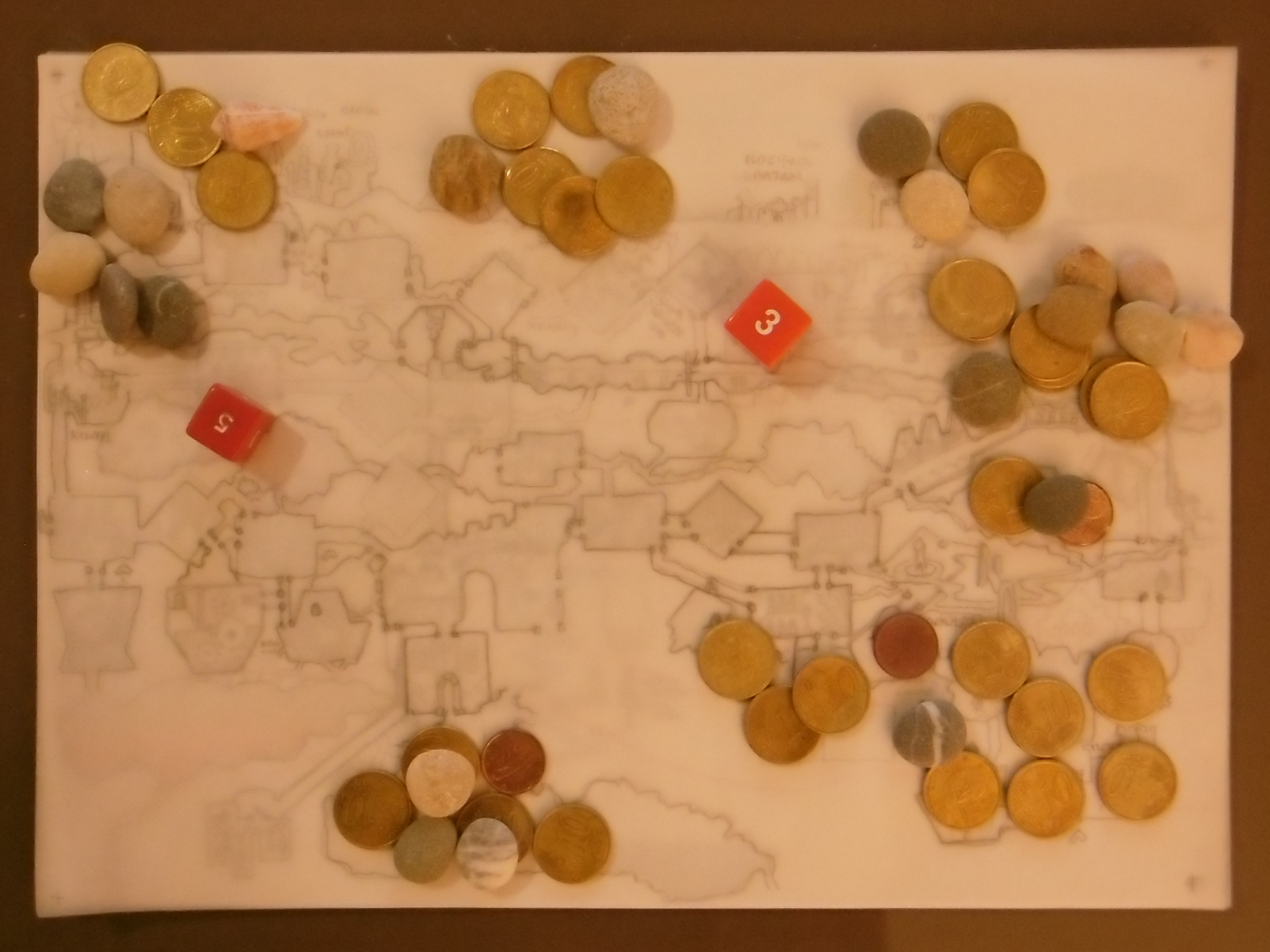The mining mogul was a middle-aged man of wide girth and overbearing stature. He carried extra weight like a cudgel. Thinning dark hair receded from a large forehead. Beady eyes sat too close either side of a hawk-billed nose.
If his name was ever known, it was not recorded. The miners called him “the Magnate.”1 They did their jobs and steered clear of his presence. With meager wages they purchased necessities from the Magnate’s store and saved any extra. There was never any extra. Such was a miner’s existence.
Monuments to the Magnate
The Magnate built the Cynosure,2 his office and home, across the valley facing the old dwarven citadel. In the valley, he established the School of Mines. Between the Cynosure and the School’s campus, he erected a statue of himself for posterity. On the other side of the hill, out of sight, he set up a mining camp, and after miners were hunted by underworld predators, he built a mausoleum at the foot of the limestone hills.
Gullhofn
The influx of gold into the region necessitated a port on the surface river. A city sprang up there, called Gullhofn.3 The citizens built walls to keep predators at bay. They also built a temple complex. Gullhofn was always a good trading partner with its mining neighbor, and after extended negotiations, the city finally joined the Magnate.
Sadhakarani
Often called Runefolk, Sadhakarani4 were nomads and renowned traders, and they manifested an innate ability for magic. They set up a bazaar in the ruins of Troelsvollr. From the “Old City Bazaar,” they traded with Gullhofn and the Magnate, as well as others, including Faerunduine.
Blink Dogs
A pack of blink dogs moved into the region and began to hunt the miners. The Magnate built a kennel and lured the blink dogs into a pact. After which, the dogs turned to hunting nomads.
Stone Giants
Learning of their cousins’ earlier demise, more stone giants moved into the dungeon. From the Doom Weapon chamber, they fought with fungaliths and hunted them until the fungaliths died out. The stone giants continued to exploit the old gem mines, hunted gnolls, and built an extensive castle below the Throne Room.
Blue Wizard
An enigmatic figure known as the Blue Wizard explored the crumbling remains of Stardark University. In dusty tomes, it found reference to the Stone of Living Statues. It sought the Hall and, after some searching, found the artifact. Then it traded for wealth and knowledge, harvested crystal from the nearby Crystal Caverns, and built living statues. All this it accomplished with perfect economy and single-minded determination. To what purpose, no one knew.
Griffon’s Claws
Then adventurers arrived. These were veterans of many adventures in distant lands beyond the western mountains. They called themselves Griffon’s Claws, and they sought not glory nor fame nor the doing of good deeds. It was wealth they wanted, and they got it through trade, extortion, theft, and force.
Ogre From the East
An ogre mage came down the Old Highway from the east. He would have passed through but tarried at the western exit long enough to encounter miners, whom he hunted for a time.
When he was finally routed by the Magnate, the ogre mage relocated to the Throrgrmir Bridge. There, he hunted gnolls and stone giants until both populations were decimated. He took over the stone giants’ castle as well as their considerable fortune. The ogre mage then began trading, first with the Blue Wizard, and expanded his territory to the old dwarven gate above the Deepmost Cavern, wherein lay Faerunduine, undisturbed.
An Ignominious End
Disgruntlement grew in the mining camp until one day the miners had enough. An angry mob stormed the Cynosure and threw the Magnate down the shaft of the tower mill.
Notes
1 The area and period of his dominance are also called “the Magnate.”
2 The Magnate, being an unusual empire, uses different names for common constructions: the Cynosure is the capital, the School of Mines a university, and the mining camp a slum.
3 Gullhofn: gull (gold) + hofn (harbor).
4 Sadhakarani: The origin of the people and their name for themselves is obscure. Their own myths indicate an otherworldly provenance, an idea fostered by the unfamiliar iconography of their accoutrements and the unusual runes they draw on their skin.


Pingback: Monstrous Denizens of the Pale Moor – DONJON LANDS
Pingback: Viggo’s Histories – DONJON LANDS